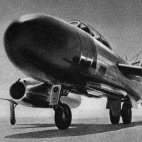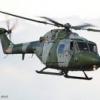Search the Community
Showing results for tags '1/200'.
-
This will be my second entry (again, expect a late start!). Cheers
-
After digesting the numerous excellent build of the B747 here in this forum, I have decided that I would like to build one too. I have always wanted the B744, especially a SIA plane. Opportunity came when someone wanted to part an old Hasegawa kit but it was a Japanese government plane. I bought it anyway and this is my first commercial plane model build. I am going to depict a SIA 50th anniversary B744 taking off. So, there will be some work to do such as extended flaps and slats, and tilting main landing gears.
- 24 replies
-
- 4
-

-
Hi all, I'm almost embarrassed to bring this to the party, but nevertheless my entry will be this 1/200 scale, 3D printed F-35. It's printed by an eBay trader called "The Dorset Print Man" who produces mainly British naval subjects (ships and aircraft), in a variety of scales. His 1/200 models are reasonably priced and provide easy access to several subjects that are hard to get elsewhere. As you can see though, they do require some refinement. I've got several of this series in my stash, but so far have only 'built' this Falklands Phantom. The work mainly involves refining/thinning down the basic shape and then adding a few details. There's painting and decaling too of course (there are no decals with the model). Like others here, I'll be making a late start but will enjoy watching the rest of your builds in meantime Cheers
-
Hi all. First up from me will be this little DH.89 (although it will be a month or two, before I can make a start). The kit comes with a choice of RAF or Malayan Airways decals, so it just has to be the latter for this GB . Cheers
-
Hi again everyone. In addition to my Bentley, I'm also hoping to build at least one Golden Age aircraft. A big biplane with three engines would seem to be a good place to start . Luckily, I have this 1/200 scale, white metal kit which was produced in the UK by Helmet Models. My second-hand example has no box or instructions, but does at least have some (slightly yellowed), Imperial Airways decals. Cheers
-
Hi all With The Bahamas now firmly established as being within the geographical reach of this Group Build (thank you hosts ), I'm free to enter this little amphibian. It's a simple, but exquisitely made, white metal kit with PE details and tiny rubber tyres. It has decals for USN and Bahamas Airways aircraft. Cheers
-
Hi all, I'm planning on three entries for this GB, two of which are already in my stash and one of which is on its way. I'm not sure which will get built first. But here's one of them anyway. It's a sweet little kit, with a beautiful resin fuselage (c/w embedded nose weight), white metal parts for most other things and a small PE fret for the really small details. It just exudes quality . There are two sets of decals: a pretty blue VARIG scheme and a more functional red one from BKS Air Transport. I'll be building the latter - mainly because I collect British airline liveries, but also because I love the way it proclaims that it's a 'PROP-JET AVRO 748'. Very '60s! I'm hoping that @Mjwomack will approve too 🎯 There's an atmospheric photo of a BKS 748 here, taken at Manchester Airport in 1964. Cheers
-
Here is the 1/200 Hasegawa 747-400 finished in the old KLM colours circa. 2015. This particular a/c holds a special place in my heart as the first 747 that I ever flew on. As a child in love with all civil a/c, the 747 was 'obviously' my favourite, but the closest that I ever got to one was spotting at Heathrow. It wasn't until I was well into my 40s that I eventually got to fly on one on a return flight from JFK to Schiphol, and it was on this particular 747, "Atlanta". This is actually a model that I finished about nine years ago and it was a first for me in a number of ways: The first civil a/c that I ever airbrushed, that's 1/200 scale, that I completely re-scribed and that I weathered. At the time, I wasn't too sure how to deal with the cabin windows and decided to go for the Kristal Klear approach. This ended up ok, but as you can see, the 'glass' ends up slightly recessed into the fuselage, which I personally don't like. I've now reverted to filling, then decals. The kit was basically built OOB except for the addition of the wifi dome. No other aerials were added as I didn't think that my skills were up to it ! Paint was a combination of Tamiya acrylics and Humbrol enamels. Decals were aftermarket, but I can't remember where they were purchased. Anyway, thanks for looking. Gary
-
Hi all, As I alluded to in the Chat section, I consider it disgraceful that we've got this far without a single C-47 in the Group Build ! So here I am, plugging that gap with this 1/200 offering from Hasegawa. I built their 1/200 scale Hercules in the recent Transport GB and found it delightful. I hope this one is as good. As you'd expect from Hasegawa, the parts look good on their sprues. Also as you'd expect from Hasegawa, the white bits on the decal sheet look decidedly creamy. Two RAF options are provided: the 267 Squadron scheme shown on the box art and a 233 Squadron, D-Day aircraft. I'll be choosing the latter, which I believe is/was also the scheme carried by the BBMF's Dak. Cheers
-
Hi all, My entry will be this Vickers Virginia - a hand-made 1/200 resin kit, produced by the late Chris Sayer (who traded as Shed Models). The kit comprises four impeccable resin parts, plus a selection of white metal bits for the engines and u/c. Noticeably absent are any struts or decals. The instruction sheet states that these were available as extras if required - a sheet of roundels was £12 (presumably containing more than just those needed for this kit), whilst an etched brass 'strut pack' could be had for £10. Unfortunately, the original owner of my kit appears to have declined these generous offers . I'll need to get some good drawings to sort out the struts. The Virginia entered RAF service in 1924, as a bomber replacement for the Vimy. It continued in front-line Squadron service until February 1938, when the last Virginias were replaced by Wellingtons, Hampdens and Whitleys. According to Wikipedia, other inter-war bombers, such as the Heyford, merely supplemented the Virginias, rather than replacing them. Over its long life, the Virginia was regularly updated and my kit represents the last (and most numerous), version - the Mk. X (roman numeral). The swept back wings and tail gun position are the give-aways. During the 1930s, Virginias found themselves being used for a number of non-bombing purposes including acting as tankers for the earliest in-flight refuelling trials and also as parachute trainers. For this latter purpose, 'jump platforms' were fitted to the lower wings. Fittingly, the final service role for Virginias was with the Parachute Test Flight at RAF Henlow, where they continued to serve until December 1941. And so Virginias ended their RAF careers in a fairly low-key way - but things could have been very different... Minutes from a committee meeting on 26th June 1940, record that consideration was being given to equipping Virginias with an equally obsolete COW cannon (37mm), for anti-tank work. Now that would have been something to see! Needless to say, it never came to fruition. I'll be finishing my Virginia as this aircraft from 214 Squadron in 1937. Cheers
- 48 replies
-
- 24
-

-
A placeholder for a MISC Freelance Max from the Star Citizen game, kit by JRDF. Advertising video for the Freelancer, the MAX is very similar, just with a larger cargo hold. More to follow ...
- 34 replies
-
- 8
-

-
- Star Citizen
- JRDF
-
(and 1 more)
Tagged with:
-
A simple build of the Revell 737-200 in 1/200 scale. The kit is straightforward and went together well but the real star of the show is the quality of the decals. Representing 'Colum', the design British Airways commissioned to represent Ireland in their World Tails livery, the decals stayed in one piece as they got manoeuvred around, and actually fit almost perfectly which was a pleasant surprise. Just a little bit of touching up with paint and some microsol was needed to finish the look off. Thanks for looking.
-
Hi all I'd like to join with this 1/200 scale kit from Academy please. It's a simple kit, but the parts are nicely moulded. The decals look nice too, although I'll only be using the windows. The kit comes without any undercarriage and is intended to built built 'wheels up' (a stand is provided). A previous owner of my kit was obviously intending to fit an undercarriage using gear from some other aircraft (definitely not a B-17), and has ground away the retracted wheel from one wing. As I'll be going back to the 'in flight' pose, I'll need to reinstate the missing wheel. Keen to build an RAF aircraft, I've been looking for some suitable schemes and come across the decal sheet for 241 (MET) Squadron, based in Iceland. I'm attracted by the nose art (is this unusual on RAF Forts?), in particular 'Hekla Hettie' (I know an annoying cat called Hettie). Here's a link to the decal sheet. I'll need to recreate these markings in 1/200. Otherwise, the only modification that I think I'll need to make is to remove the ventral ball turret. I'm no expert though, so please do set me straight if necessary . Cheers
-
Ahoy, Old Saiolors. After a long, long time, I return to modellers activities (with my google translate english... I always liked warsails, and a desire is the HMS Victory. But the size (70 meters, high is to much, for now...). I made my model in scratch in 1/100 scale, mainly aircraft. And the stuborn (is correct?, Who doesnt guive up?) insists with the scale. However the sails are always in my mind. So, in these days I rewacht the Pirates of the Caribbean, and the Black Pearl appeared... Oh my Lord... It was a passion. I go to the net and search a lots of images. The plans was difficult, because there are many, but the drawing that I found have poor details. Patiente, lets go anyway! The model was planned in 1/200 scale. Yes... I know... I could make the Victory in this scale. But the details... 😬 I'm crazy, but not like that! the "real" Black Pearl is 55 meters, more or less. inclued the bowstrip (my nautics knowledge is "google dependent"). The materials are mainly paper, cardboard, foam, skewers, whiteglue and superglue. This is the plans that I used. I cut the central structure and glued it in double cardboad. I was the same with the deck. In this case I already cut off the excess cardboard. Now a doubd. In portuguese, these parts are named "cavernas" (caves, in literal translation), I dont know in english. The pieces are glued in foam. Later, I cut the pieces. Finally I cut the parts fittings (I hope this correct).
- 38 replies
-
- 15
-

-
- Black Pearl
- scratch
-
(and 1 more)
Tagged with:
-
This was meant to be a quick build but ended up taking months as such projects so often do, I changed jobs and moved flats during the build time. I picked the kit up for a few pounds at a model show and thought it would be a good place to practise making an airliner for the first time. The tooling is from 1964 and it really shows in the quality; nothing fit flush, the undercarriage is simplistic, the cockpit windows needed reconstructing, and the passenger window transparencies were unuseable. From a distance it looks quite nice though, even if it is more of an homage to the Caravelle than an acurate scale model of it. There's a big crack right down the centre of the fuselage from when my cat unhelpfully knocked it off the table and it was too late in the day to re-fill and re-paint the damage but luckily it was mostly on the underside. Thanks for looking.
-
Hi everybody! Totally unexpected my new project arrived today. As I already announced earlier it’s the tug boat SMIT Rotterdam/London by Heller in 1/200 scale. I will build this as the SMIT London, because it was the first of the two sister ships entering service and because this is BRITmodeller forum. But first a bit of history. SMIT London was built in The Netherlands by shipyard De Merwede NV in Hardinxveld and entered service in 1974. Constructed especially for towing of very heavy objects like oil rigs over long distances together with her sisters Rotterdam and Singapore these ships had been the most powerful and biggest tug boats of the world in their time with 22.000 hp engine power. They were also used for salvage assistance to ships in distress. Dimensions: 74,75m length overall 15,68m width 7,60m depth SMIT London was registered at shipping company SMIT Internationale in Rotterdam from 1974 till 1987, from 1987 till 1991 at SMIT Internationale in Nassau, from 1991 till 1998 as ‘SMITWIJS London’ at SMITWIJS Towage CV in Nassau, from 1998 till 2007 at Wijsmuller Scheepsholding BV in Singapore, from 2007 till 2013 as ‘London’ at Svitzer Ocean Towage BV in Singapore, and in 2013 her name was changed to ‘Global Change’ while being registered at Illiana Shipping Ltd. in Panama, but she was finally broken up in India in the same year. The box: What’s inside? Hull and deck parts Funnels, bridge parts, deck parts, detail parts Railing and anchor chain Decals Instructions come with a drawing of the paint scheme in the same scale as the model Seems like a nicely detailed kit. It comes as a starter kit, which has colours, glue and paint brush included. Also included is a gimmick, which made me smile: So on to new modelling horizons with my first ship build!
- 57 replies
-
- 16
-

-

-
Hi all. My entry will be this 1/200 scale Avro Bison - a white metal kit produced by the late and lamented Shed Models. The Bison was a purpose built fleet spotter/reconnaissance aircraft that served initially with the RAF and then with the FAA, from 1922 to 1929. Some were shore based, whilst others were ship borne. All were incredibly ugly! My second-hand kit has a few issues, with some minor damage and missing parts. It also lacks its instruction sheet, just to make it harder to identify which parts have gone AWOL . On the plus side though, it has decals! I'm particularly looking forward to this one Cheers
- 16 replies
-
- 11
-

-
- 1/200
- Shed Models
-
(and 1 more)
Tagged with:
-
Hi all For the recent 40 years commemorative Falkland War GB, I built a 1/200 Vulcan and really enjoyed it. It's set me on a self-imposed mission to built all of the British Falkland War aircraft types in 1/200 scale. All I've achieved so far is to splash varying amounts of cash on obscure white metal or 3D-printed kits, which hopefully can form the basis of what I'm after. Really, it's time for me to get some of them on to my workbench and what better excuse than this Salty Sea Dog. I'm going to start with this pair of 3D-printed Sea Kings, which I bought via the Shapeways marketplace. At first sight these may appear identical, but in fact they're not. The one on the left (which is advertised as a Westland WS-61), features a dorsal radome but lacks an engine intake screen and a winch. The one on the right however (apparently a Sikorsky SH-3), has the screen and winch, but no radome. I'll be converting these to an HAS.2 and HC.4 respectively, possibly with one having folded rotors. Strangely, both models lack their starboard mainwheels, possibly as the results of a printing error. Slightly annoying, but easy to fix. Before anyone shouts, I should add that Sea King HAS.5s were also used in the Falklands War, so at some point I may need to buy another one of these tiddlers Merry Christmas.
- 50 replies
-
- 11
-

-
Hi all. Having just completed my high-flying 1/200 Bristol 138, I've remembered that I also have another 1930's record breaker in my 1/200 kit stash. I wasn't planning to build it this year, but on reflection, if not now, when? It's the Fairey Long Range Monoplane which was developed specifically to break the world non-stop flight distance record. Apparently, it was also known as the Postal Aircraft (to hide its true purpose). Two aircraft were built, J9479 (Monoplane I), and later K1991 (Monoplane II). Sadly, in 1929 J9479 crashed in Tunis during a record attempt (killing both the crew members), but in February 1933 K1991 established a new record by flying from Cranwell to Walvis Bay, Namibia, a distance of 5410 miles (8540 km). Like my Bristol 138, I bought this kit second-hand. Unlike the Bristol though, the Fairey is un-started and comes with a decent set of decals . Hopefully it should be an easy one to complete by next weekend. According to Scalemates, this is one of only two kits produced of the Fairey LR Monoplane, the other being an old 1/72 vac-form produced by Airframe. Cheers
- 12 replies
-
- 2
-

-
- 1/200
- Shed Models
-
(and 1 more)
Tagged with:
-
Hi all. I've just noticed that the GB deadline has been extended, so thought I might shamelessly exploit this opportunity to build another of my plentiful supply of rather tatty, second-hand 1/200 tiddlers. This one is the Bristol 138, which was built in the 1930s as a high altitude research aircraft. It ended up setting a total of nine altitude records, peaking at 53,937 ft (16,440m), on 30th June 1937. I'm sure that some of you will remember the FROG kit of this aircraft, but mine is a white metal kit, produced in the UK by Shed Models (unfortunately, now defunct). Mine has been started by a previous owner having added the engine and u/c. However, the latter is in a poor state - it's damaged and one side is longer than the other . It'll need to be re-done. There is a decal sheet but it's of poor quality and creased. Some of the shapes though, should come in useful as templates. I suppose I'd better get on with it!
-
Hello all, Possibly a slightly premature post, as I haven’t got the said kit yet, but I have lots of questions! I’ve been rambling on about maybe getting a 1/200 kit for a project on my 1/700 Bismarck build thread, and thought I probably ought to give it its own topic as I nearly bought one last night, and may well later today 🥴 Bonkers really, as I’ve nowhere to put it, but once I get a bee in my bonnet, I can’t shake it loose! It didn’t have to be the Bismarck, but in terms of aftermarket and availability, it seems the obvious choice. I would have liked HMS Hood, but a couple of things held me back - no sea plane (I like having an aircraft to model)/ more expensive/ less aftermarket. The aftermarket options are slightly daunting, and here’s where I want some advice. Pontos do a ‘Super Detailed’ set and above that, an ‘Advanced’ set (15 sheets of PE compared to 11 on the SD). Mk.I Models do a deluxe set. Ka do a set, Trumpeter do their own set and the rather unfortunately named ‘I Love ♥️ Kit’ do a set! Not all are easy to source. I have tracked down the ‘I Love Kit’ set 66602 from a UK model shop which seems to be the Pontos set re boxed? (but under the Trumpeter label) But which set it is I don’t know. The above offerings come with wooden decks, but I am rather attracted to the Scaledecks one. I think I’d have to get one from the States if I go down this route. Any thoughts on decks? I know one Scaledeck version comes with swastikas and one plain. I haven’t decided on a scheme yet (if any!). I realise there’s a ton of 3D (expensive!) printed parts out there. Any essentials? As I have no patience at all, I may buy later, but I’d appreciate a quick heads up before I do? I’d be very grateful for any input/ advice/ derision… ASAP! Thanks in advance, Guy ps any links to stellar build threads of the aforementioned kit would be helpful too…
-
Hi all. With my earlier dreams of building an ultra-fragile, 3D-printed, CRJ-1000 now shattered (quite literally), I feel that I've learnt my lesson. So this time around I've chosen a kit that's made from solid metal ⚒️. It's a 1/200 scale DH9A kit, which was produced in Norfolk by a gentleman called Chris Sayer, trading as Shed Models. It's a beautiful little thing, representing the top end of quality white metal kits. Sadly, Chris passed away in 2019. In October 1920, a group of enthusiastic Canadian aviators completed the first air crossing of the nation, from Halifax to Vancouver. The flight was undertaken as a relay, using different aircraft for each leg. The final leg (Winnipeg to Vancouver), was flown using an ex-RAF DH9A, which is to be the subject of my build. As far as I can see, the aircraft still carried it's original RAF scheme, but to which had been added the Canadian civil registration G-CYAJ. Here's a link to a nice photograph of the plane and here's another to an article on the flight. The kit includes decals for RAF, RAAF, Soviet and Afghan aircraft, so I should be OK for the roundels at least. I'll probably try to add a little bit of rigging, but will draw the line at trying to replicate those spoked wheels Cheers
-
Calling this finished A MISC Freelancer from the Star Citizen game. The kit is by JRDF (JR Design & Fabrication), licenced from Roberts Space Industries. A feature of these kits is that some components are swappable, allowing varied display options. In this case, the landing gear and entry door (near front, port side). I also left the rear ramp loose/poseable, along with the turret (top rear).
- 3 replies
-
- 10
-

-
- Star Citizen
- 1/200
-
(and 1 more)
Tagged with:
-
Hi all, I'll be building this 1/200 scale, 3D printed kit of the Bombardier CRJ-1000 airliner. The -1000 series was the longest version of the CRJ (Canadair Regional Jet), family and was produced between 2010 and 2020. I bought this kit, via the Shapeways marketplace, about 7 or 8 years ago. At the time I couldn't find any aftermarket decals for the -1000, so ended up buying a couple of sheets for shorter versions (from the Canadian company, V1 Decals), in order to get the necessary number of windows. I'll be building a Croatia Airlines aircraft, using a Flightpath A319/320 sheet for their markings. Cheers
- 11 replies
-
- 6
-

-
- 1/200
- 3D Printed
-
(and 1 more)
Tagged with:


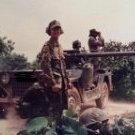


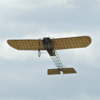
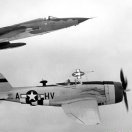
.thumb.jpeg.fcf185ed9c8c199cd9714bb7d9816b09.jpeg)
